Administration Console
iWay Integration Applications (iIAs), iWay Application Archives (iAAs), and Templates are managed from the iSM Administration Console.
The Templates pane is shown in the following image. The Templates pane allows you to add and delete Templates that are used for iIAs.

The Applications pane is shown in the following image. The Applications pane allows you to upload, download, create, and delete iIAs.
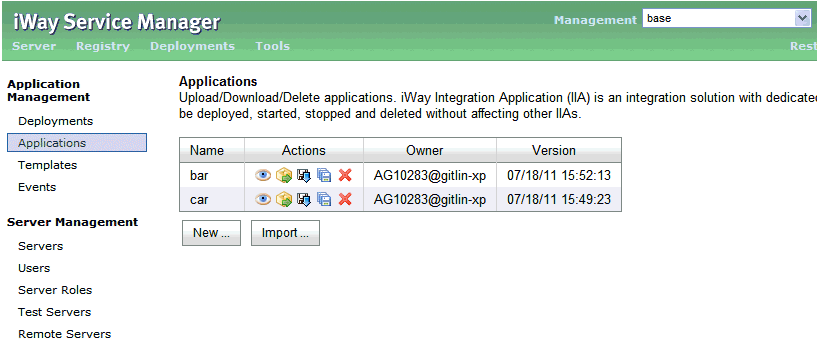
The Deployments pane is shown in the following image. The Deployments pane allows you to deploy iIAs by selecting an available Template and iAA.
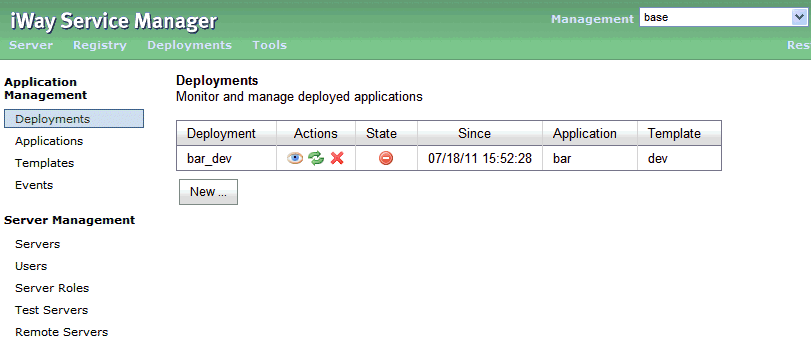
Admin servers, iIAs, and Templates are displayed in separate sections within the Management drop-down list, as shown in the following image.
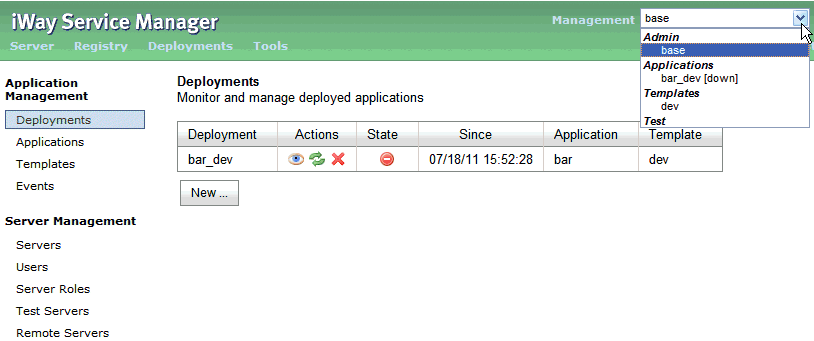
The Monitoring pane is shown in the following image, which provides a status of all iIAs and their associated channels at a glance.
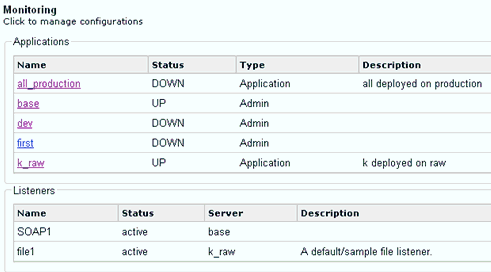
The General Properties pane of the iSM Administration Console now includes an Application section in the table, as shown in the following image.
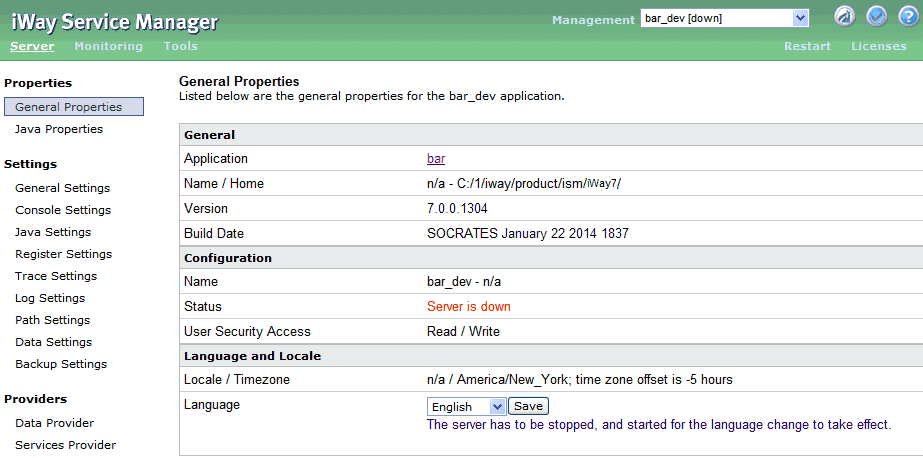
The Application Sources pane is shown in the following image, which lists the iWay components that are included in the iIA.

